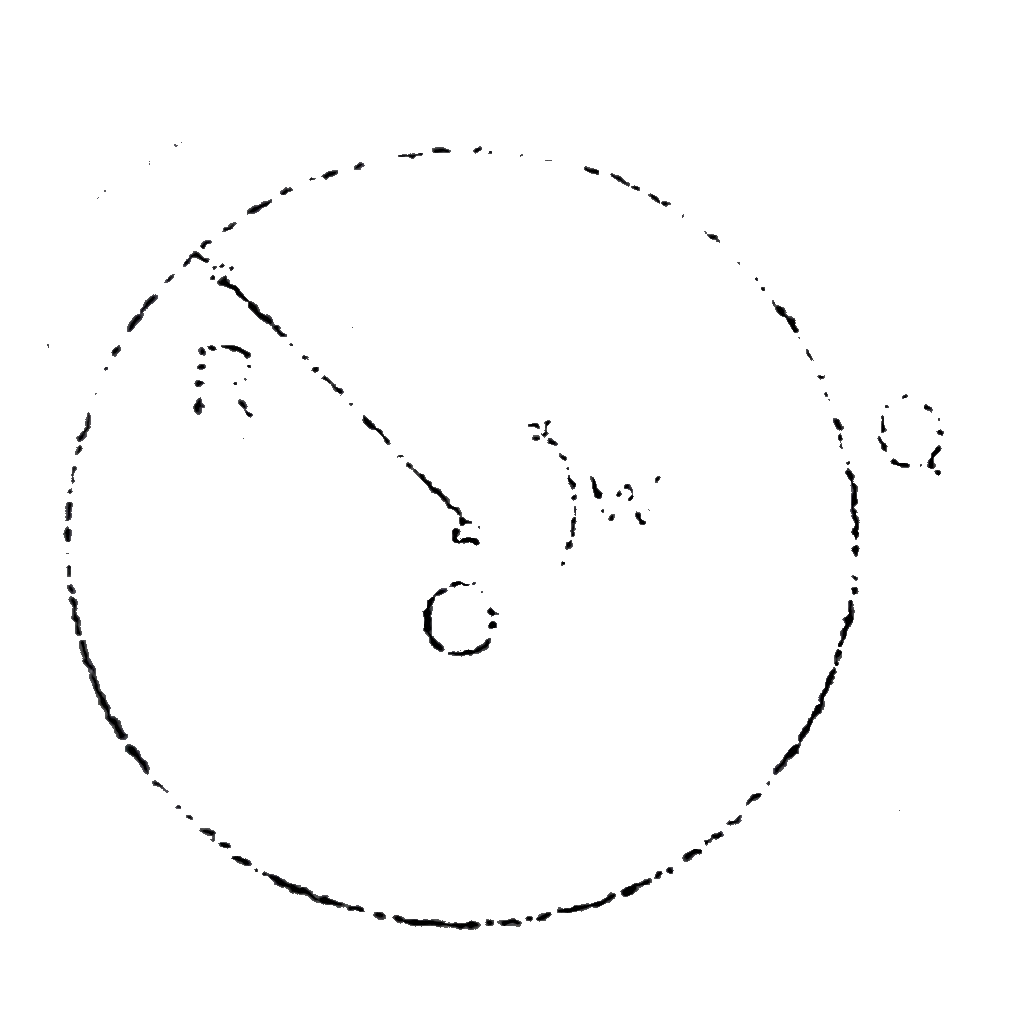A uniformly charged ring having linear charge density λ is rotating in X-Y plane with uniform angular speed o about its own axis inside the uniform magnetic field B along the y direction. The magnitude of maximum torque acting on the ring about its diameter is
λωBπR3
λωBπR32
2λωBπR3
3λωBπR3
To solve the problem of finding the magnitude of the maximum torque acting on a uniformly charged ring rotating in a magnetic field, we can follow these steps:
1. Understanding the System:
- We have a uniformly charged ring with linear charge density λ rotating in the X-Y plane about its own axis with an angular speed ω.
- The magnetic field B is directed along the Y-axis.
2. Calculate the Charge on the Ring:
- The total charge Q on the ring can be expressed in terms of the linear charge density λ and the circumference of the ring:
Q=λ⋅(2πR)
where R is the radius of the ring.
3. Determine the Current Due to Rotation:
- The time period T of rotation is given by:
T=2πω
- The current I flowing due to the charge moving around the ring can be calculated as:
I=QT=λ⋅(2πR)2πω=λ⋅R⋅ω
4. Calculate the Magnetic Dipole Moment:
- The magnetic dipole moment m for a current loop is given by:
m=I⋅A
where A is the area of the ring. The area A of the ring is:
A=πR2
- Substituting the expression for current I:
m=(λ⋅R⋅ω)⋅(πR2)=πλR3ω
5. Calculate the Torque:
- The torque τ on the magnetic dipole in a magnetic field is given by:
τ=m⋅B⋅sin(θ)
- For maximum torque, θ=90∘ (i.e., sin(90∘)=1):
τmax=m⋅B=(πλR3ω)⋅B
6. Final Expression for Maximum Torque:
- Therefore, the magnitude of the maximum torque acting on the ring about its diameter is:
τmax=πλR3ωB
Conclusion:
The magnitude of the maximum torque acting on the ring about its diameter is given by:
τmax=πλR3ωB
- We have a uniformly charged ring with linear charge density λ rotating in the X-Y plane about its own axis with an angular speed ω.
- The magnetic field B is directed along the Y-axis.
- The total charge Q on the ring can be expressed in terms of the linear charge density λ and the circumference of the ring:
Q=λ⋅(2πR)
where R is the radius of the ring.
- The time period T of rotation is given by:
T=2πω
- The current I flowing due to the charge moving around the ring can be calculated as:
I=QT=λ⋅(2πR)2πω=λ⋅R⋅ω
- The magnetic dipole moment m for a current loop is given by:
m=I⋅A
where A is the area of the ring. The area A of the ring is:
A=πR2
- Substituting the expression for current I:
m=(λ⋅R⋅ω)⋅(πR2)=πλR3ω
- The torque τ on the magnetic dipole in a magnetic field is given by:
τ=m⋅B⋅sin(θ)
- For maximum torque, θ=90∘ (i.e., sin(90∘)=1):
τmax=m⋅B=(πλR3ω)⋅B
- Therefore, the magnitude of the maximum torque acting on the ring about its diameter is:
τmax=πλR3ωB
The magnitude of the maximum torque acting on the ring about its diameter is given by:
τmax=πλR3ωB
Topper's Solved these Questions
Similar Questions
A conducting ring of radius r having charge q is rotating with angular velocity ω about its axes. Find the magnetic field at the centre of the ring.

View SolutionAn infinite cylinder of radius r with surface charge density σ is rotated about its central axis with angular speed ω. Then the magnetic field at any point inside the cylinder is
View Solution
Knowledge Check
There is a ring of radius r having linear charge density λ and rotating with a uniform angular velocity ω. the magnetic field produced by this ring at its own centre would be
Aλω22−μ0Bμ0λ2ω√2Cμ0λω2Dμ0λ2ω2A conducting loop rotates with constant angular velocity about its fixed diameter in a uniform magnetic field, whose direction is perpendicular to that fixed diameter.
A(a) The emf will be maximum at the moment when flux is zeroB(b) The emf will be 0 at the moment when flux ismaximumC( c) The emf will be maximum at the moment when plane of the loop is parallel to the magnetic fieldD(d) The phase difference between the flux and the emf π/2When a 'j' shaped conducting rod is rotating in its own plane with constant angular velocity ω about one of its ends P in a uniform magnetic field →B ( directed normally into the plane of paper ) the magnitude of emf induced across it will be
 ABω√L2+l2B12BωlL2C12Bω(L2+l2)D12Bωl2
ABω√L2+l2B12BωlL2C12Bω(L2+l2)D12Bωl2
A rod of length l rotates with a small but uniform angular velocity ω about its perpendicular bisector. A uniform magnetic field B exists parallel to the axis of rotation. The potential difference between the centre of the rod and an end is
View SolutionA non-conducting disc having unifrom positive charge Q, is rotating about its axis with unifrom angular velocity ω.The magnetic field at the centre of the disc is.

View SolutionA rod of length l rotates with a uniform angular velocity omega about its perpendicular bisector. A uniform magnetic field B exists parallel to the axis of rotation. The potential difference between the two ends of the rod is
View SolutionA circular conducting ring is rotated about one its diameter in a magnetic field
View SolutionA rod of length l rotates with a uniform angular velocity omega about its perpendicular bisector. A uniform magnetic field B exists parallel to the axis of rotation. The potential difference between the two ends of the rod is
View Solution
